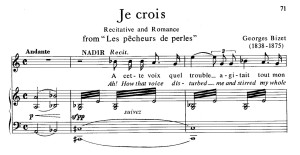Building your digital library of music scores
 Regardless of the genre of music you sing, you will need to have sheet music easily available for yourself and those with whom you collaborate.
Regardless of the genre of music you sing, you will need to have sheet music easily available for yourself and those with whom you collaborate.
I would suggest that you use one of the many cloud storage accounts like iCloud, Sugarsync, Dropbox, or Google Drive as the location for your library. The free accounts have enough storage space to hold a huge library of scores. As of this writing, Google Drive allows for the largest amount of free storage. As a backup, it’s a good idea to occasionally copy everything to a flash drive for those times when internet access isn’t available.
If you have paper scores, you might want to convert them to digital as each gig comes up. This is less overwhelming than converting your whole library, which might be overkill in the long run.
Equipment needed:
- A scanner to transfer paper scores to digital files.
- A flash drive, so that you can print scores from any computer regardless of internet access
- A cloud-based account where your scores will be accessible anywhere there is internet access.
A lot of the work of creating digital scores has been done for you already. If you are a classical singer, hundreds of thousands of public-domain scores are available on sites such as:
IMSLP – Petrucci Music Library
University of Rochester Sibley Music Library
There are many other resources out there for obtaining digital scores in all genres.
About formats
The most common file type is PDF. I would advise that you stick to that format, since it will be the easiest to share and it scales well to different paper and screen sizes.
If you are scanning a paper score, use your scanner’s settings for a black and white document and set the resolution to 300dpi. This will keep file sizes smaller and make for a legible score. If you use a higher dpi you will have a very sharp looking score, but a much larger file size. After scanning, your scanner software will give you an option to save as a PDF. Saving to other formats is not usually useful for sharing, printing, and performing.
A typical mp3 of a 3 minute song is about 3MB in size. A well-scanned PDF of the score for that song might be around 300kb. That’s a 10-fold difference. That comparison might help you in planning for your storage needs. That would work out to over 16,000 pages of scores per GB of storage.
For each pdf I download or create, I use this file naming convention:
Classical music: Composer-Title [sometimes also add key for art songs]:
Brahms – Wiegenlied E-flat
León – A ti high
Other music: Either Composer-Title or just the Title [sometimes add key]:
Porter – Katie went to Haiti in G
Yesterday in F
I do this because classsical music has many similar titles and popular music usually has unique titles. Whatever you do, make sure that you name files meaningfully so that you can find them later.